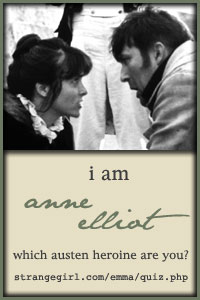
I’ve been fascinated by volcanoes all my life, maybe because they’ve formed the landscapes closest to my heart, and been so key in archaeology—destroying and preserving, both. Pompeii and Herculaneum, Akrotiri . . . but first of all the cliffs of the ruined cliff dwellings in northern New Mexico where I grew up, as a child climbing into tufa caves and wondering about those who climbed before.
And I’ve been drawn almost like fate to volcanic islands across the world. I've known many, as long back as I can remember. They’ve meant to me yearning and loss, and always at the same time (there's their charm, perhaps) the beginning of new hope. Like the delicate pink grasses that are the first thing to grow on the pitch-black desolation of the lava flows on the Kohala Coast, there's been awakening for me on fire-born islands.
Stromboli
I'm devastated that in seventh grade my classmates are the daughters of women photographers, of writers with dovecotes in their high-walled patios on Canyon Road, of archaeologists who take them to spend summers on volcanic islands where they speak Italian and pick apricots and keep a donkey at the bottom of the
garden—things they talk about together while I live in the most boring part of town and have silly, short bangs, and can be nothing, ever, other than awkward, gawky, and hopelessly unremarkable. I haven’t lived on a romantic island always in danger of being blown away. I haven’t lived at all, really, I understand—as paradoxically I begin to.
Santorini
I’m here at last, a lifelong dream—four thousand years too late. Looking across at the place beyond lights. Buried Akrotiri on its black height. Around it are the Burnt Islands, the immense void in the Aegean where island used to be, before the volcano hollowed it out, too deep and fathomless for ships to anchor anywhere.
We take a boat across to the caldera. We climb in perfect silence, subsumed by the cindery blackness on every side. There's wind as always from between the Burned Islands, the blackened bones of what was once whole and intact. This is the newest: what they call the New Burned Island. There's room for only one small boat to dock against the rock, so any that come after are tied to the first. We disembark by being handed across all the boats in turn—a bridge of boats.
After climbing we swim where hot springs come up in the sea. There is a small white church there in the cove, and above it a cave with an outhouse, overrun with goats.
Pantelleria
On this other island south of Sicily formed by volcanoes, they come by early each morning selling fish, along the coast road, in one of the little three-wheelers—spada, thick swordfish steaks, to marinate in lemon, olive oil, parsley, salt.
Besides the famous capers that grow on the island there is yellow fennel, which Lawrence Durrell in Bitter Lemons says "likes old ruins best, growing there more freely than on the natural rock." And there are little rust-colored oysters which taste pungent and rusty, like their color. We drink a dry volcanic wine with them, having driven up steep streets to buy a dozen bottles from a man in a dim shop.
This is what I've left my husband for.
Years later, when it's done, I'll think of dancing in darkness above the sea on that island, just thirty miles from Africa. I'll remember heavy pots of oregano on the long smooth-tiled terrazza, crushing up against oregano with bare legs in the dark, releasing the fragrance. I'll remember being in love with the place as much as the man I was with. I'll wonder whether it has always been places, with me.
Hawai’i
Keauhou Bay. Across the harbor is the birthplace of the stillborn king. I look out at the kayaks slipping in and out of it like needles through green silk. The gentle long curve of the old defunct volcano above it, almost obliterated by wet cloud.
I taught my father volcanoes. I travelled to Pompeii one year, Etna another; and while he was going up Mt. St. Helens with my cousins, near the end, I was on my way to Thera, the island we had read about entranced, blown out of the Aegean some four thousand years ago, leaving a shadow island, an aching imprint of absence in the sea. Another time we walked out on the molten lava on Hawaii's southern coast; the heat came through the soles of our beach shoes. I didn’t feel afraid for him there, somehow, as I did in the waves, the dazzling white breakers, where I saw all of a sudden how small and how frail he looked, battling through, delighted, to the outer calm.
Against the blue-black of the coast at Keauhou were the bright yellow fish we found together, splashed out on the rock like the great caves in France where creatures of the darkness swam to light. At O Honaunau, the place of refuge of the ancient Hawaiians where second chances are given and wise old sea turtles the color of the water paddle in their Buddhist way about, we watched a big man carving gods.
And in the end I leave him there, in the black lava tidepools of that island that has unexpectedly been home to us, the pools of blackest lava with their mirroring blue.
image: Christie B. Cochrell, Kona tidepool



















No comments:
Post a Comment